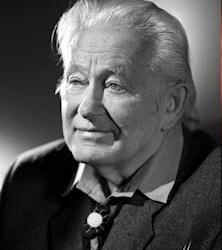Georges Charpak facts for kids
Quick facts for kids
Georges Charpak
|
|
|---|---|
 |
|
| Born | 1 August 1924 |
| Died | 29 September 2010 (aged 86) Paris, France
|
| Nationality | Polish-Jewish French |
| Citizenship | French |
| Alma mater | École des Mines Collège de France |
| Known for | Megawatts and Megatons MicroMegas detector Multiwire proportional chamber |
| Spouse(s) | Dominique Vidal (m. 1953; 3 children) |
| Awards | Nobel Prize in Physics (1992) High Energy and Particle Physics Prize (1989) Prix Jean Ricard (1973) |
| Scientific career | |
| Fields | Physics |
Georges Charpak (born Jerzy Charpak, 1 August 1924 – 29 September 2010) was a famous French physicist. He was born in Poland but moved to France when he was young. In 1992, he won the Nobel Prize in Physics for inventing special tools called particle detectors. These tools help scientists study tiny particles, like those inside atoms.
Contents
Early Life and Education
Georges Charpak was born Jerzy Charpak to a Jewish family in a village in Poland. When he was seven years old, his family moved to Paris, France. He began studying mathematics in 1941. His younger brother, André Charpak, later became an actor and film director.
During World War II, Georges Charpak joined the French Resistance, a group that fought against the occupation of France. In 1943, he was captured and imprisoned. The next year, he was sent to a concentration camp called Dachau. He stayed there until the camp was freed in 1945.
After the war, Charpak studied at the prestigious École des Mines in Paris, one of France's top engineering schools. He became a French citizen in 1946. He graduated in 1948 and then joined the laboratory of Frédéric Joliot-Curie at the Collège de France. He earned his PhD in nuclear physics in 1954.
Inventing Particle Detectors
In 1959, Charpak started working at CERN (the European Organization for Nuclear Research) in Geneva. This is where he invented and developed the multiwire proportional chamber. This invention was a big step forward in physics. It helped scientists track tiny particles much better than older methods. The multiwire proportional chamber became widely used after it was made public in 1968.
Later, in the 1970s, Charpak also helped invent another type of detector called the scintillation drift chamber. He retired from CERN in 1991.
Later Career and Recognition
In 1980, Georges Charpak became a professor at ESPCI Paris, a famous school for physics and chemistry. There, he showed how useful his particle detectors could be, especially for improving health diagnostics. He also helped start several companies that focused on science and health. In 1985, he was chosen to be a member of the French Academy of Sciences.
Georges Charpak received the Nobel Prize in Physics in 1992. He won it for his amazing work on particle detectors, especially the multiwire proportional chamber. At the time, he was connected to both ESPCI Paris and CERN. He was the last person to win the physics Nobel Prize alone for many years.
Charpak was a strong supporter of nuclear power in France. He believed it was an important energy source. He was also a member of the Board of Sponsors for the Bulletin of the Atomic Scientists, a group that works to make the world safer from nuclear dangers.
Family and Legacy
Georges Charpak married Dominique Vidal in 1953, and they had three children. His daughter, Nathalie Charpak, became a pediatrician.
Georges Charpak passed away on 29 September 2010, in Paris, when he was 86 years old. His inventions changed how scientists study the smallest parts of our universe and even helped improve medical tools.
See also
 In Spanish: Georges Charpak para niños
In Spanish: Georges Charpak para niños

